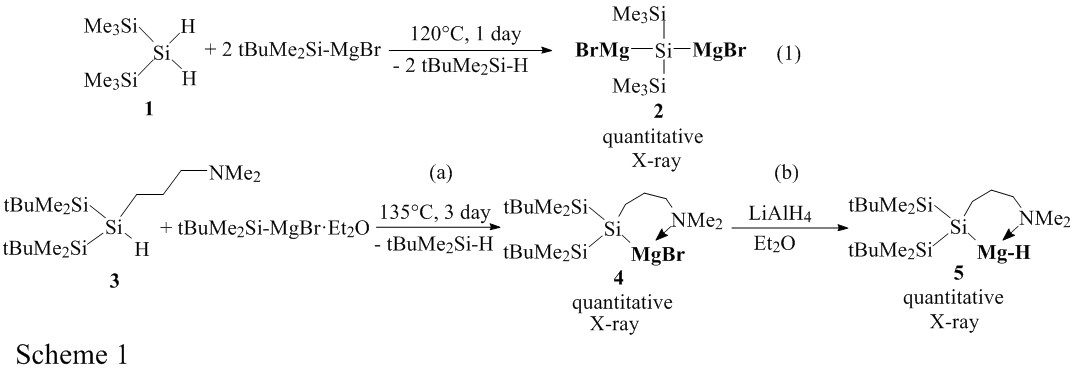
Synthesis of novel multi-Grignard and half-pincer sila reagents
Organomagnesium compounds play an important role in both organic and organometallic chemistry. In contrast, the knowledge about silylmagnesium compounds is very limited, most probably because reactions of elemental magnesium with silyl halides do not lead to the desired silylmagnesium compounds but rather to Wurtz-type silicon-silicon coupling products. Reaction of silyllithiums with magnesium halides is currently the most useful method for preparation of silylmagnesium compounds. However, the limited number of available silyllithium reagents is a major drawback. Moreover, there is almost no data on the synthesis and properties of geminal 1,1-di-Grignard compounds either in organic or in silicon chemistry.
Previously, we reported that organozinc reagents can activate Si-H bonds via a radical mechanism producing silylzinc compounds. [1] Here, we report the first examples of radical activation of Si-H bonds in R(4-n)SiHn (n=1-3) by R`MgX (R`= tBu, tBuMe2Si; X= Cl, Br) and R``2Mg (R`` = nBu, tBu) leading to sila-magnesium products. Using this reaction, we synthesized geminal- di-Grignard compounds directly from di-hydrido silanes. Thus, reaction of 1 with 2 equivalents of tBuMe2SiMgBr yields quantitatively the novel bis(Grignard)silane 2 (Eq. 1). Similarly, silane 3 yields a half-pincer sila-Grignard 4 (Scheme 1, step a), which readily react with LiAlH4 to yield a novel rare silyl magnesium hydride complex 5 which was isolated, crystallized and characterized by X-ray spectroscopy.

[1] R. Dobrovetsky, Y. Kratish, B. Tumanskii, M. Botoshansky, D. Bravo-Zhivotovskii, Y. Apeloig, Angew. Chem. Int. Ed. 2012, 51, 4671.
Powered by Eventact EMS